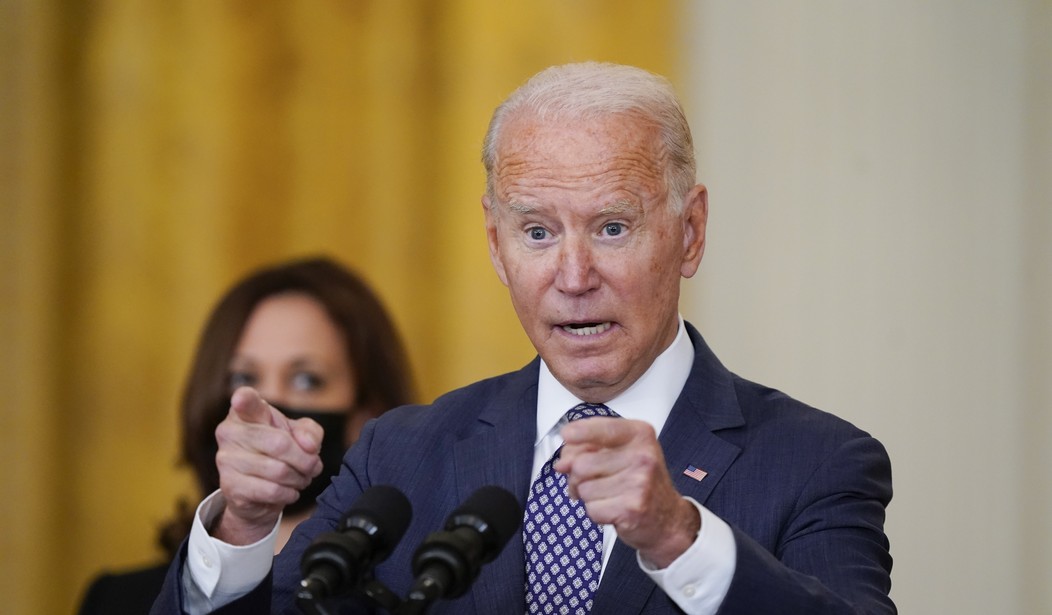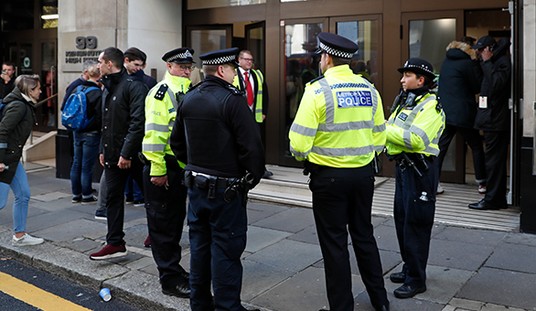Just imagine all of the pouncing that will take place from this new inflation record. The producer price index (PPI) hit a new record of 9.7% last year, an eye-popping figure that portends more inflation to come in 2022 as those costs get passed along to consumers:
A key inflation measure climbed to a record high in 2021, as pandemic price hikes just aren’t going away.
The US producer price index, which tracks what America’s producers get paid for their goods and services on average over time, rose 9.7% last year, not adjusted for seasonal swings. It was the biggest calendar-year increase since the data series began in 2010, according to the Bureau of Labor Statistics. …
Stripping out prices for food, energy and trade services, which measures the changes in margins received by wholesalers and retailers, the inflation index rose 6.9% last year, compared with a modest 1.3% increase in 2020.
CNBC’s approach is, well… it could have been worse:
Wholesale prices rose less than expected in December but still set a new standard at a time when consumer inflation is running at a nearly 40-year high, the Labor Department said Thursday.
The producer price index, which measures prices received by producers of goods, services and construction, was up 0.2% for the month, half the 0.4% Dow Jones estimate.
However, on a 12-month basis, the index was up 9.7% to end 2021, the highest calendar-year increase ever in data going back to 2010.
The monthly gain was a sharp drop-off from the two previous months, which showed respective gains of 0.6% and 1%.
Thank goodness for small favors, it seems.
The PPI is no minor issue either, Barron’s reminds its readers. In an already inflationary environment, businesses will find it difficult to pass along wholesale inflation costs to end consumers. That will squeeze businesses, especially smaller businesses that can ill afford even more pressure in a pandemic environment. It will be bad enough for the big corporations as it is:
Like consumers, businesses are paying higher prices for goods and services—a risk to earnings in 2022, if companies can’t pass the costs along to their customers. …
But rising prices for business threaten profit margins. And evidence of falling profit margins will be one of the biggest things to watch for when companies start reporting fourth-quarter numbers–and giving forecasts for 2022–in coming weeks.
About 110 companies in the S&P 500 are due to report earnings in the coming two weeks.
Falling profit margins usually results in cost-cutting measures at larger corporations. That will dampen job creation at a point where we are still 3.2 million jobs shy of the jobs held at the start of the pandemic, in a jobs market where creation has already slowed considerably. Cutbacks would likely impact supply chains negatively as well at a time when our supply chains need all hands on deck.
Several media outlets are playing the expectation game, stating that the lower-than-expected monthly figure in December shows signs that inflation may be cooling. Combined with an unexpected jump in the weekly jobless claims report this morning, US News & World Report doesn’t sound as sanguine:
The number of Americans filing first-time claims for unemployment benefits rose last week to 230,000, the Labor Department reported on Thursday.
The number is 23,000 higher than the prior week’s 207,000. The four-week moving average was 210,750, an increase of 6,250. …
“The question now is whether inflation will peak over the coming months, or if continued price pressures will prompt the Fed to remove monetary accommodation more aggressively,” BCA Research wrote in a note to clients Thursday.
“Our base case is that CPI inflation will moderate over the coming 6-12 months as the pandemic situation improves which will ease supply-side disruptions and support a rotation in demand from goods to services,” the note added.
“Businesses are worrying about rising input and wage costs, while households are distressed at the surging consumer prices, and they both have cause for concern,” economist Joel Naroff said in a statement Wednesday. “Inflation jumped again in December, though the pace was down from what we saw in October and November. Since December 2020, prices were up 7%, an increase not seen since the wage/price inflation spiral days in the early 1980s. Excluding food and energy, the rise over-the-year was the greatest in 30 years.”
Bottom line: Inflation isn’t slowing down at all, and likely won’t until the Federal Reserve conducts a substantial intervention. When it does, the economy will get jolted into a recession, at least for a short period of time, but likely longer as the monetary expansion of the past dozen years gets slowly wrung out of global markets. None of this will make Joe Biden look good, and it’s likely to lead to a lot of pouncing not just from Republicans but from some of Biden’s fellow Democrats as well.








Join the conversation as a VIP Member